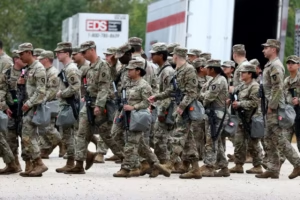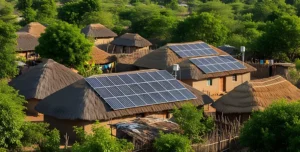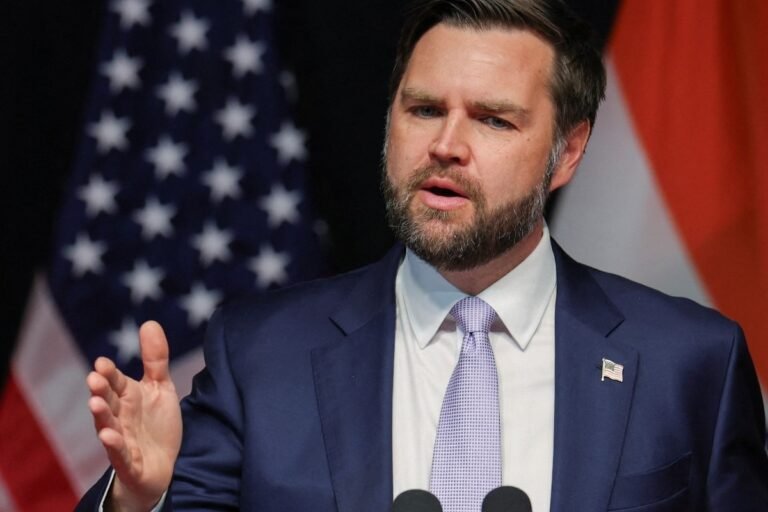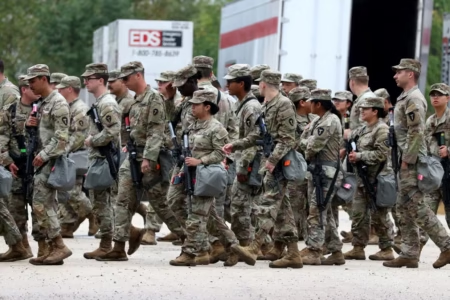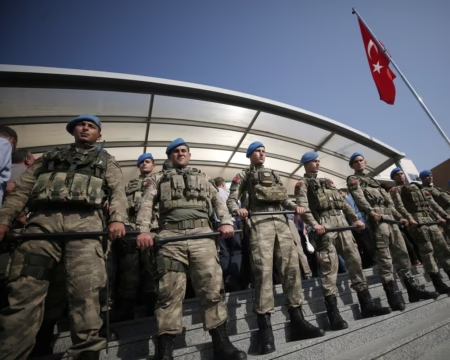U.S. Vice President JD Vance has made it clear that the United States will not step into the growing tensions between India and Pakistan. Speaking in a recent interview, Vance stated that the conflict is “none of America’s business” and that the U.S. has no plans to get directly involved. His comments come at a time when Pakistan has increased its use of drones, missiles, and artillery in cross-border attacks. While the situation continues to escalate, Vance has urged both nations to resolve the issue through peaceful talks.
U.S. Vice President Speaks Out
In an interview with Fox News, JD Vance shared his views on the rising military tension between India and Pakistan. “What we can do is try to encourage these folks to de-escalate a little bit,” Vance said. “But we’re not going to get involved in the middle of a war that’s fundamentally none of our business and has nothing to do with America’s ability to control it.”
Vance’s comments came as both countries engaged in cross-border shelling and airspace warnings. The conflict has sparked concern around the globe, especially given the long and complex history between the two nuclear-armed neighbors.
Rising Tensions on the Subcontinent
The conflict between India and Pakistan has deep roots, often centered around the disputed region of Kashmir. Over the years, the two nations have fought multiple wars and engaged in several border skirmishes. In the latest flare-up, Pakistan has reportedly used drones and launched missiles across the Line of Control (LoC), prompting strong responses from India.
While both countries claim to be defending their sovereignty, civilian areas have also been hit, raising fears of a broader conflict. Local reports suggest that thousands of residents have been moved from border villages to safer areas.
U.S. Calls for Peaceful Solutions
Despite refusing to step into the conflict, the Biden administration and President Donald Trump have both expressed concern. President Trump, speaking to reporters outside the White House, said, “We are watching the situation closely. We hope peace will return soon and we’re ready to help if needed.”
JD Vance, however, took a firmer stance. He emphasized that American involvement would not help and could even make matters worse. “This is a regional conflict with a long history. It’s not something the U.S. can fix from the outside,” he said.
His remarks underline a shift in U.S. foreign policy that focuses more on restraint and less on global policing.
Strategic Silence or Smart Diplomacy?
Some analysts believe the U.S. is trying to walk a fine line. “By staying neutral, America avoids complicating an already tense situation,” said Dr. Arvind Menon, a political science professor at Georgetown University. “The region is sensitive, and any foreign involvement could escalate things quickly.”
Others worry that a lack of strong international action might embolden military aggression. “When major powers like the U.S. sit back, it sends the wrong message,” said Sarah Khan, a South Asian affairs expert. “Diplomacy matters, but it also matters who shows up to support peace.”
Past U.S. Involvement
The U.S. has often played the role of mediator in South Asia. In 1999, during the Kargil War, then-President Bill Clinton urged Pakistani Prime Minister Nawaz Sharif to pull back troops from the Indian side of the LoC. Clinton’s direct diplomacy helped defuse the crisis.
In contrast, today’s White House is choosing not to get involved beyond verbal encouragement. The move has drawn both praise and criticism. Some believe it’s time for regional players to solve their own problems. Others see it as a retreat from America’s long-standing role in international peace efforts.
Ongoing Conflict and Regional Fallout
The growing violence is already having real-world effects. Trade between India and Pakistan, already limited, has come to a near halt. Airlines have been rerouted to avoid the conflict zone. Schools in border regions have been shut down, and fear among civilians continues to rise.
United Nations officials have called for restraint on both sides. “We urge India and Pakistan to avoid actions that could worsen the situation,” said a spokesperson for the U.N. Secretary-General.
For now, there is no clear end in sight. Neither India nor Pakistan has shown interest in backing down. While some backchannel talks may be happening, official peace efforts remain stalled.
JD Vance’s statement signals that the U.S. does not plan to lead any talks or send diplomats to the region. “Our job is to take care of the American people, not get caught up in every conflict across the world,” he said.
As the situation unfolds, all eyes remain on South Asia—and on how world leaders choose to respond.
With rising tensions and uncertain outcomes, the India-Pakistan conflict continues to demand global attention. While the United States has chosen to remain on the sidelines for now, the call for peace is clear. For the people caught in the middle, a diplomatic solution cannot come soon enough.

